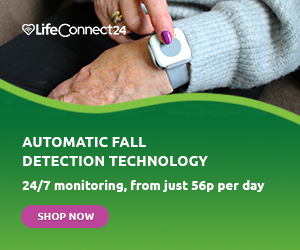Paget’s disease of bone is a common medical condition that mainly affects people over the age of 50 in the UK. The condition is named after Sir James Paget, who identified it in the late 19th century. According to the Paget’s Association website, the disease occurs in around 1% of UK adults over 55. By the age of 80, around 1 in 12 men and 1 in 20 women will have Paget’s disease in some part of their skeleton.
You may have already seen our guide to the most common medical conditions that affect older people. This article focuses solely on Paget’s disease of bone, including the causes, symptoms and treatments available.
What is Paget’s Disease of Bone?
Bone, as you may know, is living tissue that is constantly being renewed and repaired. Paget’s disease of bone disrupts this cycle of bone renewal, also called bone remodelling. As a result, the bones become weak and, in some cases, misshapen. The condition commonly affects the bones in the pelvis, spine and skull, although it can also affect other areas of the body.
Causes of Paget’s Disease
There are two important kinds of cells which are responsible for the regeneration of your bone cells:
- Osteoclasts – cells that absorb old bone.
- Osteoblasts – cells that make new bone.
Paget’s disease of bone occurs when the osteoclast cells begin to absorb bone at a faster pace than usual. This then leads to your osteoblast cells attempting to produce new bone quicker than usual. As a result, bones can become larger or weaker than normal, or appear misshapen.
We don’t yet know exactly why this process occurs. Genetics seems to play a part. For example, the children of people with Paget’s disease are around seven times more likely to develop the condition themselves, according to Paget’s Association. A bone injury in early life can also trigger the condition in those who are already genetically likely to develop it.
Symptoms of Paget’s Disease
Symptoms of Paget’s disease of bone are actually quite rare. Many people will only receive a diagnosis after having an x-ray or blood test for another reason. However, some people do experience symptoms, including:
- Pain – usually in the affected bone(s) or the nearby joints.
- Joint stiffness and swelling.
- Shooting pain that travels along or across the body.
- Numbness and tingling.
- Loss of movement in a part of the body.
- Visible changes to the shape of your bone(s).
Diagnosis
There are three main ways to diagnose Paget’s disease of bone: blood tests, x-rays, and bone scans.
Blood Tests
You might have a blood test for several reasons, even if your doctor does not suspect Paget’s disease. A general blood test looks for lots of different substances, including an enzyme called alkaline phosphatase (ALP). High levels of ALP can often be an indicator of Paget’s disease. However, this is not enough by itself to diagnose the condition. You might need further blood tests or other tests to identify why your ALP is high.
X-Ray
X-rays can often detect the signs and features of Paget’s disease in the skull, abdomen, and legs. However, a single X-Ray won’t be enough to understand the full extent of its presence. More tests will be necessary to see if any other bones have been affected.
Bone Scans
In some cases, the doctor might also carry out an isotope bone scan to check the extent of the disease throughout the body. This involves a small amount of radioactive substance being injected into your blood. This substance will collect in areas where there is a lot of bone renewal taking place. Doctors can see these areas using a special camera before the radioactive substance passes out of your body.
Treatment for Paget’s Disease
Currently, there is no cure for Paget’s disease of bone. Fortunately, there are several treatments that can help relieve the symptoms. If you aren’t experiencing symptoms, you might not start treatment right away.
Here are some of the common treatments for Paget’s disease of bone.
Bisphosphonates
Bisphosphonates are a group of medicines that can help to regulate bone growth, by slowing down the cells that absorb old bone. As a result, the body won’t need to produce so much new bone tissue. There are several different types of Bisphosphonates available, the most common of which are risedronate, zoledronate, and pamidronate. This medication can help to reduce the pain caused by Paget’s disease of the bone for several years at a time.
Painkillers
Over the counter painkillers such as paracetamol and ibuprofen will help to reduce any pain caused by your condition. You should always make sure that you read the packet or leaflet before you start taking painkillers to ensure that they are suitable for you.
Therapy
Some people affected by Paget’s disease can benefit from supportive therapies such as occupational and physiotherapy. Both offer exercises and techniques that can help to reduce pain, improve movement, and make everyday tasks easier for you.
Special Devices
Products such as walking sticks, orthotics insoles, and spinal braces can help to reduce the strain on the affected bones.
Surgery
Most people won’t need to have surgery for Paget’s disease. However, in serious cases, where further problems such as fractures and osteoarthritis develop, you may need to have surgery. Common procedures include realigning the bones after a fracture, removing and replacing a damaged joint with an artificial one, and moving bone away from a compressed nerve.
Diet
Calcium and vitamin D will help to keep your bones and healthy. We should all make sure we’re getting enough of these nutrients in our diets, but this is especially important for people with Paget’s disease. You will find calcium in dairy products such as cheese and milk (or fortified plant milks like soya and oat), as well as sardines and other fish eaten with the bones.
Complications
Unfortunately, Paget’s disease of the bone can sometimes lead to further complications. The NHS lists the following as examples:
- Fragile bones that will break more easily.
- Enlarged or misshapen bones. You might notice that one leg feels shorter than the other as a result of curvature.
- Hearing loss (if the condition affects your skull).
- Too much calcium in your blood, known as hypercalcemia.
- Heart problems.
- Bone cancer – although this is very rare, only affecting between 1 in 100 and 1 in 1,000 people with Paget’s disease.
Stay Safe at Home
Our personal alarm service is ideal for people who suffer from a medical condition like Paget’s disease of the bone. If you ever suffer a fall or need assistance, simply press the button on your pendant and our 24-hour Response Team will help.
For more information about our alarms, please speak to our friendly advisors on 0800 999 0400. Alternatively, send us an email to info@lifeconnect24.co.uk or complete our contact us form and we will get back to you as soon as possible.
Read more: 20 Most Common Medical Conditions Affecting Older People
VAT Exemption
Paget’s disease of bone qualifies you for VAT Exemption when you order a personal alarm system from LifeConnect24. This means that you will not have to pay any VAT whatsoever on your new Lifeline Alarm system – a significant saving. More than 95% of LifeConnect24 customers are eligible for VAT exemption. To find out more about qualifying conditions, click here.
Editor’s Note: This article was updated on 19th April 2022 to reflect current information.


